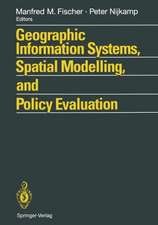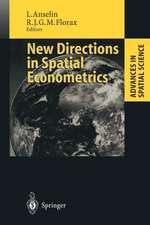Solitary Non-Employed Persons: Empirical Research on Hikikomori in Japan: Advances in Japanese Business and Economics, cartea 23
Autor Yuji Gendaen Limba Engleză Paperback – 15 aug 2020
The new concept provided by this book is “solitary non-employed persons (SNEP).” SNEP are defined as non-employed persons who are normally entirely alone or do not spend time with people other than their family. According to a detailed time-use survey in Japan, SNEP make up almost 70 % of single, jobless persons aged 20 to 59. The number of SNEP doubled in the 2000s.
As a serious issue for non-employment, economists and sociologists have focused on long-term unemployed persons and persons “not in education, employment, or training” (NEET), which include discouraged persons resigning from work. These serious non-employment issues are attributable to and further aggravated by the isolation experienced by the SNEP. Social withdrawal—that is, the hikikomori who stay indoors—is one notable feature of Japanese youth problems in many cases. Large numbers of the middle-aged jobless Japanese also currently shut themselves in their rooms. The objective approach by the SNEP concept enables us to understand the reality of these withdrawn persons who are now growing in number in many countries. A continuous increase in the number of SNEP will cause several difficulties in society and the economy. SNEP will not make their own livings after the deaths of their families, causing social security costs and financial deficits to further accumulate in the efforts to help them. A shortage of an attractive labor force will accelerate in the future due to the expansion of SNEP within the young and middle-aged populations.
This book proposes appropriate policies to prevent an increase in SNEP in such a way as to generate skilled professionals, as well as to reach out and support them.It will contribute to developing studies for jobless people closely involved in social exclusion, and to finding universal and effective solutions for their inclusion.
| Toate formatele și edițiile | Preț | Express |
|---|---|---|
| Paperback (1) | 619.85 lei 38-44 zile | |
| Springer Nature Singapore – 15 aug 2020 | 619.85 lei 38-44 zile | |
| Hardback (1) | 724.32 lei 3-5 săpt. | |
| Springer Nature Singapore – 16 iul 2019 | 724.32 lei 3-5 săpt. |
Din seria Advances in Japanese Business and Economics
- 20%
 Preț: 557.71 lei
Preț: 557.71 lei - 24%
 Preț: 789.80 lei
Preț: 789.80 lei - 15%
 Preț: 646.30 lei
Preț: 646.30 lei -
 Preț: 390.63 lei
Preț: 390.63 lei - 18%
 Preț: 736.64 lei
Preț: 736.64 lei - 18%
 Preț: 722.88 lei
Preț: 722.88 lei - 18%
 Preț: 730.16 lei
Preț: 730.16 lei - 15%
 Preț: 644.30 lei
Preț: 644.30 lei - 15%
 Preț: 583.28 lei
Preț: 583.28 lei - 18%
 Preț: 730.65 lei
Preț: 730.65 lei - 18%
 Preț: 785.11 lei
Preț: 785.11 lei - 18%
 Preț: 731.10 lei
Preț: 731.10 lei - 15%
 Preț: 647.27 lei
Preț: 647.27 lei -
 Preț: 389.31 lei
Preț: 389.31 lei - 18%
 Preț: 887.86 lei
Preț: 887.86 lei - 24%
 Preț: 599.84 lei
Preț: 599.84 lei - 15%
 Preț: 526.83 lei
Preț: 526.83 lei - 18%
 Preț: 784.30 lei
Preț: 784.30 lei -
 Preț: 389.70 lei
Preț: 389.70 lei - 18%
 Preț: 723.56 lei
Preț: 723.56 lei - 18%
 Preț: 999.60 lei
Preț: 999.60 lei - 18%
 Preț: 724.80 lei
Preț: 724.80 lei - 18%
 Preț: 724.00 lei
Preț: 724.00 lei - 18%
 Preț: 949.10 lei
Preț: 949.10 lei - 18%
 Preț: 780.52 lei
Preț: 780.52 lei - 18%
 Preț: 784.13 lei
Preț: 784.13 lei -
 Preț: 394.29 lei
Preț: 394.29 lei - 15%
 Preț: 642.18 lei
Preț: 642.18 lei - 15%
 Preț: 649.22 lei
Preț: 649.22 lei -
 Preț: 391.22 lei
Preț: 391.22 lei -
 Preț: 390.63 lei
Preț: 390.63 lei - 27%
 Preț: 517.86 lei
Preț: 517.86 lei
Preț: 619.85 lei
Preț vechi: 815.59 lei
-24% Nou
Puncte Express: 930
Preț estimativ în valută:
118.62€ • 128.81$ • 99.64£
118.62€ • 128.81$ • 99.64£
Carte tipărită la comandă
Livrare economică 18-24 aprilie
Preluare comenzi: 021 569.72.76
Specificații
ISBN-13: 9789811377891
ISBN-10: 9811377898
Pagini: 124
Ilustrații: XIX, 124 p. 43 illus., 39 illus. in color.
Dimensiuni: 155 x 235 mm
Ediția:1st ed. 2019
Editura: Springer Nature Singapore
Colecția Springer
Seria Advances in Japanese Business and Economics
Locul publicării:Singapore, Singapore
ISBN-10: 9811377898
Pagini: 124
Ilustrații: XIX, 124 p. 43 illus., 39 illus. in color.
Dimensiuni: 155 x 235 mm
Ediția:1st ed. 2019
Editura: Springer Nature Singapore
Colecția Springer
Seria Advances in Japanese Business and Economics
Locul publicării:Singapore, Singapore
Cuprins
Chapter 1. The Definition and Basic Facts of SNEP.- Chapter 2. The Determinants and Characteristics of SNEP.- Chapter 3. The Daily Lives and Job Searches of SNEP.- Chapter 4. The Past, Present, and Future of SNEP.- Chapter 5. Questions and Answers About SNEP.- References.- Index.
Notă biografică
Yuji Genda is a professor of labor economics at the Institute of Social Science, The University of Tokyo. He earned his Ph.D. in economics at Osaka University. His publications include A Nagging Sense of Job Insecurity—The New Reality Facing Japanese Youth (LTCB International Library Trust, International House of Japan, 2005); Jobless youths and the NEET problem in Japan, Social Science Japan Journal (2007, 10(1)); The endless ice age—A review of the cohort effect in Japan, The Japanese Economy (co-authored, 2008, 35(3)); Long-term effects of a recession at labor market entry in Japan and the United States, Journal of Human Resources (co-authored, 2010, 45(1)); Young, Japanese, and not in education, employment, or training: Japan’s experience with the NEET phenomenon, in Demographic Change and Inequality in Japan (edited by S. Shirahase, 2011, Trans Pacific Press); The solitary non-employed persons (SNEPs): a new concept of non-employment, Japan Labor Review (2014, 10(4)); Does downsizing take a toll on retained staff? An analysis of increased working hours in the early 2000s in Japan, Journal of the Japanese and International Economies (co-authored, 2015, 36); and, An international comparison of hope and happiness in Japan, the UK and the US, Social Science Japan Journal (2016, 18(2)).
Textul de pe ultima copertă
This book is devoted to offering a new concept of non-employment caused by social exclusion. Among labor economic studies, it is the first attempt to investigate the conditions of jobless persons who have completely lost opportunities for daily communication with others.
The new concept provided by this book is “solitary non-employed persons (SNEP).” SNEP are defined as non-employed persons who are normally entirely alone or do not spend time with people other than their family. According to a detailed time-use survey in Japan, SNEP make up almost 70 % of single, jobless persons aged 20 to 59. The number of SNEP doubled in the 2000s.
As a serious issue for non-employment, economists and sociologists have focused on long-term unemployed persons and persons “not in education, employment, or training” (NEET), which include discouraged persons resigning from work. These serious non-employment issues are attributable to and further aggravated by the isolation experienced by the SNEP. Social withdrawal—that is, the hikikomori who stay indoors—is one notable feature of Japanese youth problems in many cases. Large numbers of the middle-aged jobless Japanese also currently shut themselves in their rooms. The objective approach by the SNEP concept enables us to understand the reality of these withdrawn persons who are now growing in number in many countries. A continuous increase in the number of SNEP will cause several difficulties in society and the economy. SNEP will not make their own livings after the deaths of their families, causing social security costs and financial deficits to further accumulate in the efforts to help them. A shortage of an attractive labor force will accelerate in the future due to the expansion of SNEP within the young and middle-aged populations.
This book proposes appropriate policies to prevent an increase in SNEP in such a way as to generate skilled professionals, as well as to reach out and support them.It will contribute to developing studies for jobless people closely involved in social exclusion, and to finding universal and effective solutions for their inclusion.
The new concept provided by this book is “solitary non-employed persons (SNEP).” SNEP are defined as non-employed persons who are normally entirely alone or do not spend time with people other than their family. According to a detailed time-use survey in Japan, SNEP make up almost 70 % of single, jobless persons aged 20 to 59. The number of SNEP doubled in the 2000s.
As a serious issue for non-employment, economists and sociologists have focused on long-term unemployed persons and persons “not in education, employment, or training” (NEET), which include discouraged persons resigning from work. These serious non-employment issues are attributable to and further aggravated by the isolation experienced by the SNEP. Social withdrawal—that is, the hikikomori who stay indoors—is one notable feature of Japanese youth problems in many cases. Large numbers of the middle-aged jobless Japanese also currently shut themselves in their rooms. The objective approach by the SNEP concept enables us to understand the reality of these withdrawn persons who are now growing in number in many countries. A continuous increase in the number of SNEP will cause several difficulties in society and the economy. SNEP will not make their own livings after the deaths of their families, causing social security costs and financial deficits to further accumulate in the efforts to help them. A shortage of an attractive labor force will accelerate in the future due to the expansion of SNEP within the young and middle-aged populations.
This book proposes appropriate policies to prevent an increase in SNEP in such a way as to generate skilled professionals, as well as to reach out and support them.It will contribute to developing studies for jobless people closely involved in social exclusion, and to finding universal and effective solutions for their inclusion.
Caracteristici
Introduces the concept of “solitary non-employed persons (SNEP) to clarify the relationship of joblessness with social exclusion Shows that the reality of those who are socially withdrawn (the hikikomori) can be found by objective time-use surveys Proposes social and economic policies for isolated non-employed persons for an aging society with a serious financial deficit



























